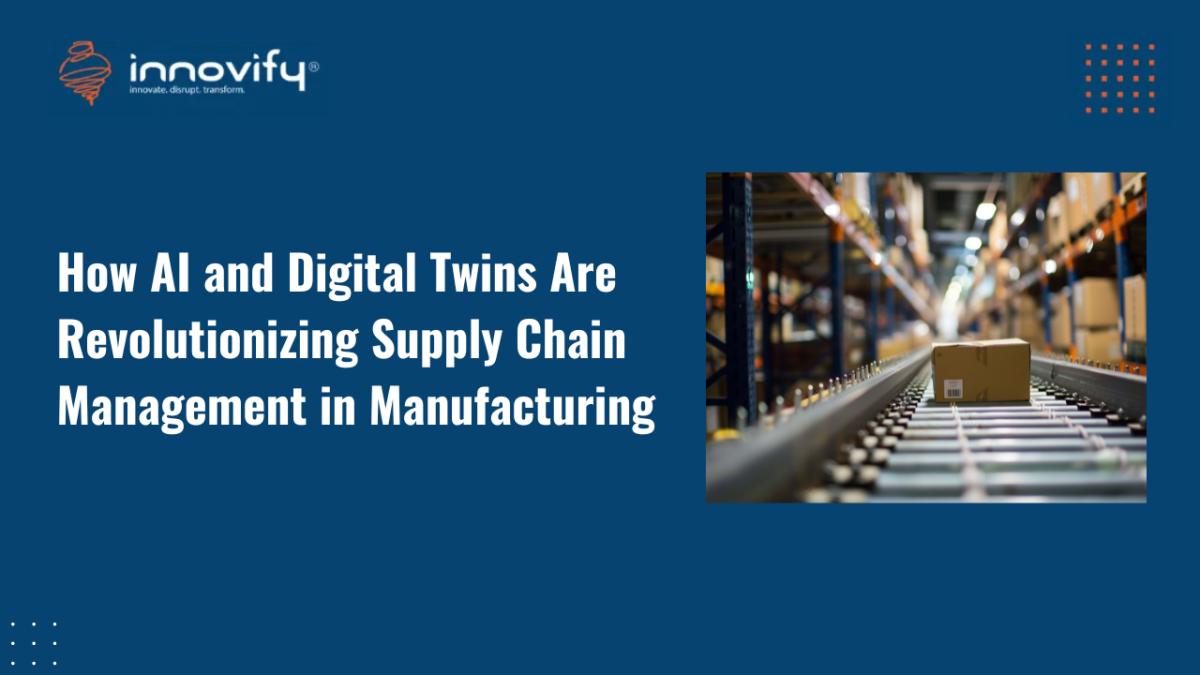AI/ML
How AI and Digital Twins Are Revolutionizing Supply Chain Management in Manufacturing
AI and digital twins in supply chain management are transforming manufacturing, ensuring materials arrive on time and production never stalls.
Picture this: your factory’s supply chain runs like a well-oiled machine. Materials arrive right on time, production never stalls because of shortages, and you’re ready for anything—whether it’s a sudden spike in demand or a shipping delay. That’s the power of AI-powered supply chain management paired with digital twins in manufacturing. It’s like having a crystal ball and a virtual control room all in one, helping you predict, plan, and adapt like never before. Let’s dive into how these technologies are transforming the way manufacturers manage their supply chains, with some real-world examples to bring it to life.
What is AI-Powered Supply Chain Management?
AI-powered supply chain management is all about using smart technology to keep the flow of materials, products, and information smooth and efficient. AI digs into massive amounts of data – think sales figures, weather patterns, supplier performance, and market trends – to predict what you’ll need and when. When you add a digital twin – a virtual replica of your supply chain – manufacturers can test scenarios, spot potential hiccups, and optimize everything from procurement to delivery. It’s a game-changer that saves time, reduces costs, and keeps production on track.
How It Works
Here’s a simple breakdown of how AI and digital twins team up to manage supply chains:
- Data Analysis: AI gathers data from everywhere – sales records, IoT sensors, supplier updates, even social media trends – to understand the big picture.
- Demand Forecasting: Machine learning predicts future demand, so you know how much material to order and when.
- Digital Twin Simulation: A virtual model of your supply chain lets you simulate disruptions (like a port closure) or test new strategies in real time.
- Automated Procurement: AI automates ordering processes, ensuring the right materials arrive just in time.
- Order Optimization: AI-driven systems track orders from start to finish, tweaking routes or schedules for faster delivery.
- Continuous Tuning: Both AI and the digital twin learn from new data, getting smarter and more accurate over time.
Why It Matters
- Fewer Delays: Predict and avoid disruptions before they stop your production line.
- Cost Savings: Optimize logistics and reduce excess inventory to save money.
- Better Planning: Stay ahead of demand spikes or shortages with smart forecasts.
- Faster Deliveries: Streamline order fulfillment to keep customers happy.
- Resilience: Adapt to unexpected challenges like weather or supply issues.
Digging Deeper: How AI and Digital Twins Transform Supply Chains
Let’s explore how these technologies make supply chain management a breeze in manufacturing.
Predicting Demand Like a Pro
AI doesn’t just guess what you’ll need – it uses machine learning to nail down demand with precision. It looks at past sales, upcoming holidays, seasonal trends, and even customer behavior on social media. For example, if you’re making outdoor gear, AI might predict a surge in demand for tents before summer camping season kicks in, so you can stock up on fabric and poles early.
Simulating with Digital Twins
A digital twin is like a virtual twin of your supply chain – think of it as a live model of your factories, warehouses, and transport routes. Paired with AI, it lets you run “what-if” scenarios. What happens if a key supplier delays a shipment? How will a storm affect your delivery trucks? You can test these ideas virtually, tweak your plans, and avoid real-world headaches. It’s like practicing for a race before the big day.
Automating the Heavy Lifting
Procurement used to mean endless phone calls and emails. Now, AI automates it. When stock levels drop or demand spikes, AI can place orders with suppliers instantly, negotiate terms, and even switch to backup vendors if needed. This ensures you’ve got materials flowing without you micromanaging every step.
Optimizing Order Fulfillment
AI doesn’t stop at ordering – it tracks every order from factory to customer. It optimizes delivery routes, adjusts for traffic or weather, and ensures products arrive on time. For instance, if a truck is delayed by a snowstorm, AI can reroute it or speed up another shipment to cover the gap.
Enhancing Resilience
Supply chains face all sorts of curveballs – natural disasters, labor strikes, or global shortages. AI and digital twins help you bounce back. By analyzing real-time data and running simulations, you can identify risks (like a port closure) and have a backup plan ready, keeping your operations steady no matter what.
Cutting Waste and Boosting Sustainability
By predicting demand accurately and optimizing logistics, AI reduces overstocking and unnecessary shipping. This not only saves money but also shrinks your carbon footprint – less fuel used, fewer discarded materials. It’s a win for your wallet and the planet.
Real-World Examples of AI in Supply Chain Management
Let’s see this tech in action across different manufacturing sectors.
Food and Beverage Manufacturing
In the food industry, where freshness is everything, AI is a lifesaver. Take a large juice company that sources oranges from multiple regions. They use AI to anticipate seasonal demand changes – like a spike in orange juice sales during winter flu season. The system analyzes production schedules, weather impacts on crops, and past sales to predict how many oranges they’ll need. Paired with a digital twin, they can simulate supply chain disruptions (e.g., a storm delaying a harvest) and adjust orders or routes. This keeps production flowing, reduces waste from spoiled fruit, and ensures shelves stay stocked.
Automotive Manufacturing
Car makers deal with complex supply chains involving thousands of parts. A company like Tesla might use AI to manage its supply of batteries and semiconductors. The AI forecasts demand based on pre-orders and market trends, while the digital twin simulates the impact of a chip shortage. If a supplier falls behind, AI reroutes orders to other vendors and optimizes delivery schedules, keeping assembly lines moving. This has helped automakers cut lead times and save millions in lost production.
Electronics Manufacturing
In electronics, where components like microchips are hard to come by, AI shines. An Apple supplier might use AI to track its supply chain for screens and processors. The system predicts demand for new iPhone models, simulates potential delays (like a factory shutdown), and automates orders with multiple suppliers. This ensures timely production launches, even during global chip shortages, keeping the supply chain resilient.
Textile Manufacturing
For textile manufacturers producing clothing, AI and digital twins manage fabric and dye supplies. A company like H&M might use AI to forecast demand for summer dresses based on weather forecasts and fashion trends. The digital twin simulates the impact of a delayed cotton shipment, allowing them to switch suppliers or adjust production plans. This keeps stores stocked without overordering, reducing fabric waste and storage costs.
Challenges and How AI Overcomes Them
Supply chains aren’t always smooth, but AI and digital twins have solutions:
- Unpredictable Disruptions: Think hurricanes or strikes. AI analyzes real-time data to predict risks, and the digital twin tests recovery plans.
- Demand Variability: Sales can fluctuate wildly. AI uses historical and external data to adjust forecasts dynamically.
- Complex Networks: With multiple suppliers and routes, things can get messy. AI optimizes every step, while the digital twin maps the entire network for clarity.
The Future of Supply Chain Management in Manufacturing
The potential of AI and digital twins is only growing. Here’s what’s on the horizon:
- Fully Automated Chains: Supply chains could run end-to-end with minimal human input, from ordering to delivery.
- Real-Time Adaptability: Instant responses to disruptions will become the norm, thanks to live data and simulations.
- Sustainable Practices: Optimized routes and reduced waste will push manufacturing toward greener goals.
- Global Collaboration: Digital twins will connect supply chains across borders, making global manufacturing more efficient.
Ready to Supercharge Your Supply Chain?
If the idea of a supply chain that anticipates your every need sounds exciting, AI and digital twins might be the key. They’re already helping manufacturers stay flexible, cut costs, and deliver on time – whether it’s juice, cars, phones, or clothes. Imagine what they could do for your factory.
Want to see how these tools can work for you? Let’s talk about your supply chain challenges and how custom AI solutions can make a difference. Reach out today, and let’s build a stronger future together!




